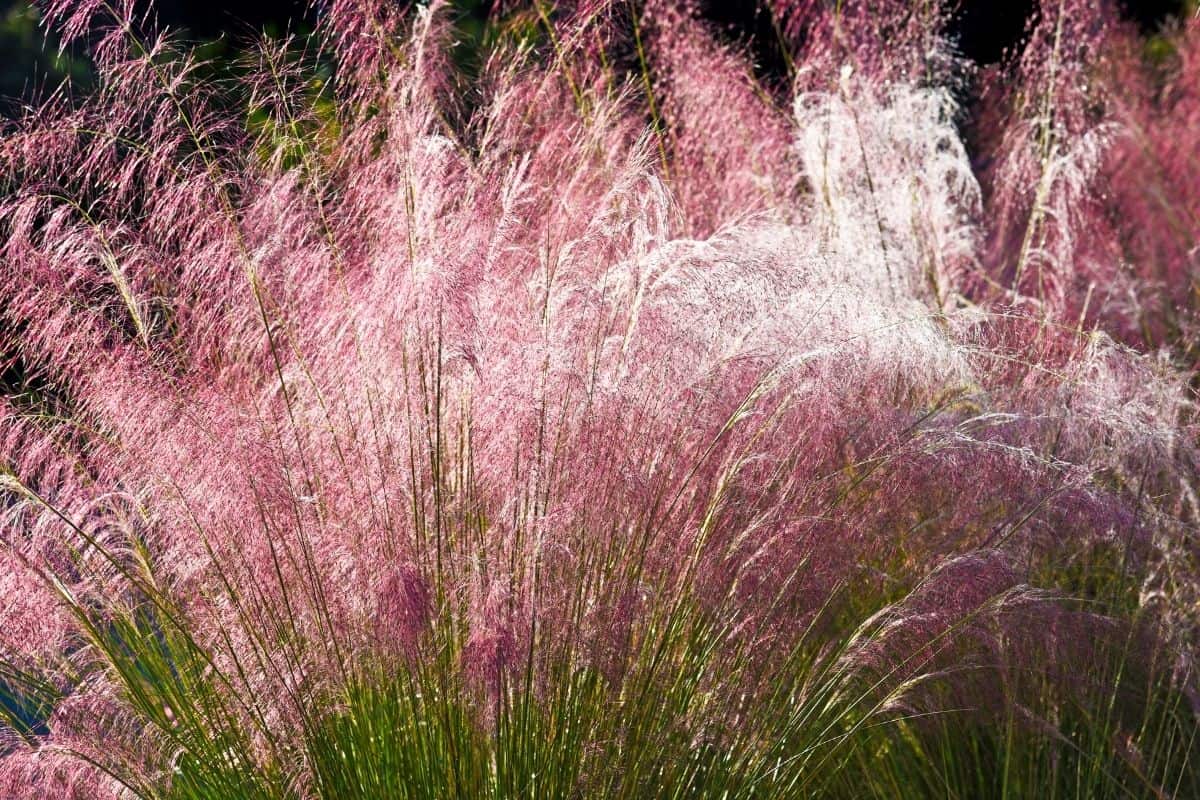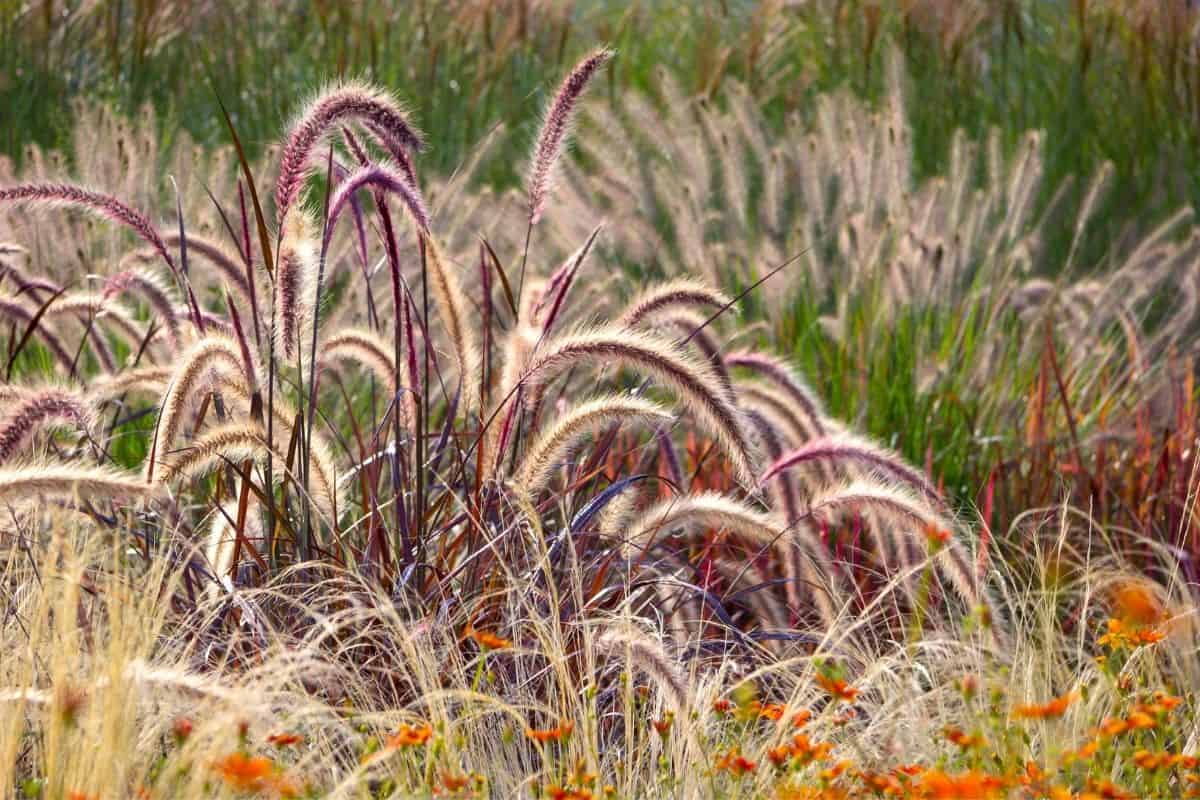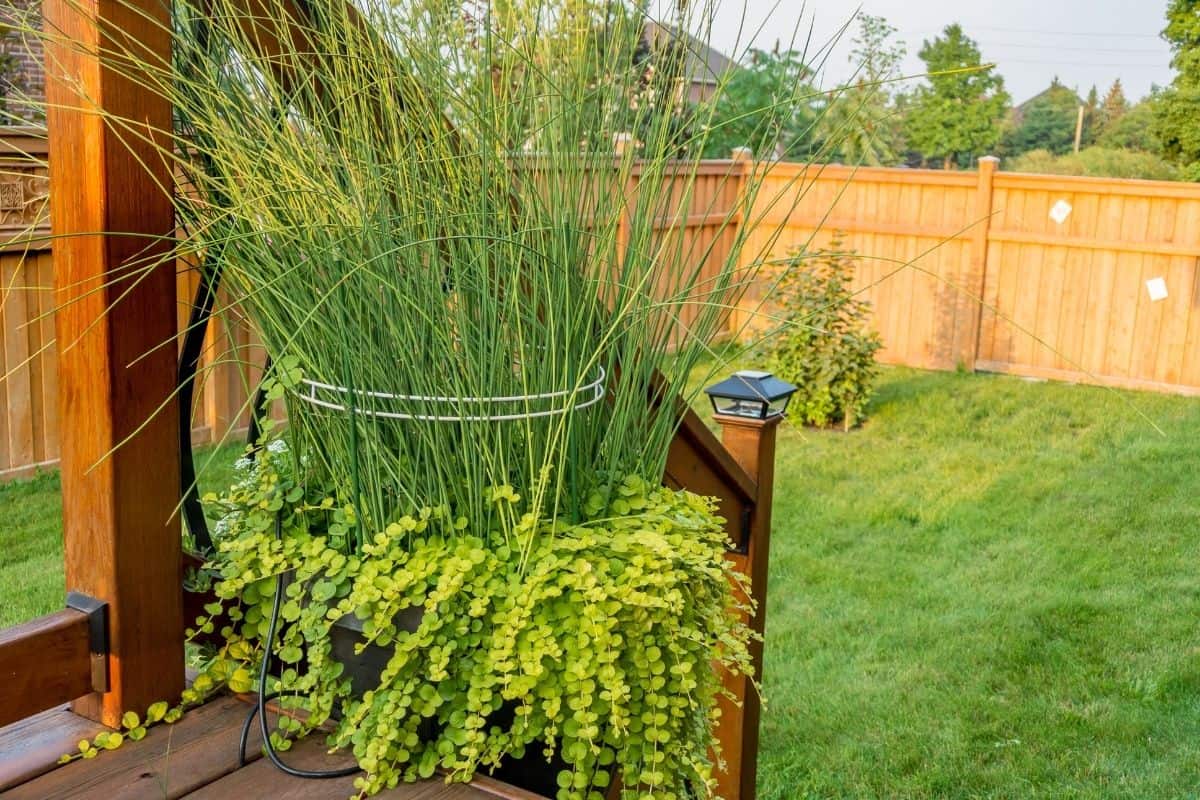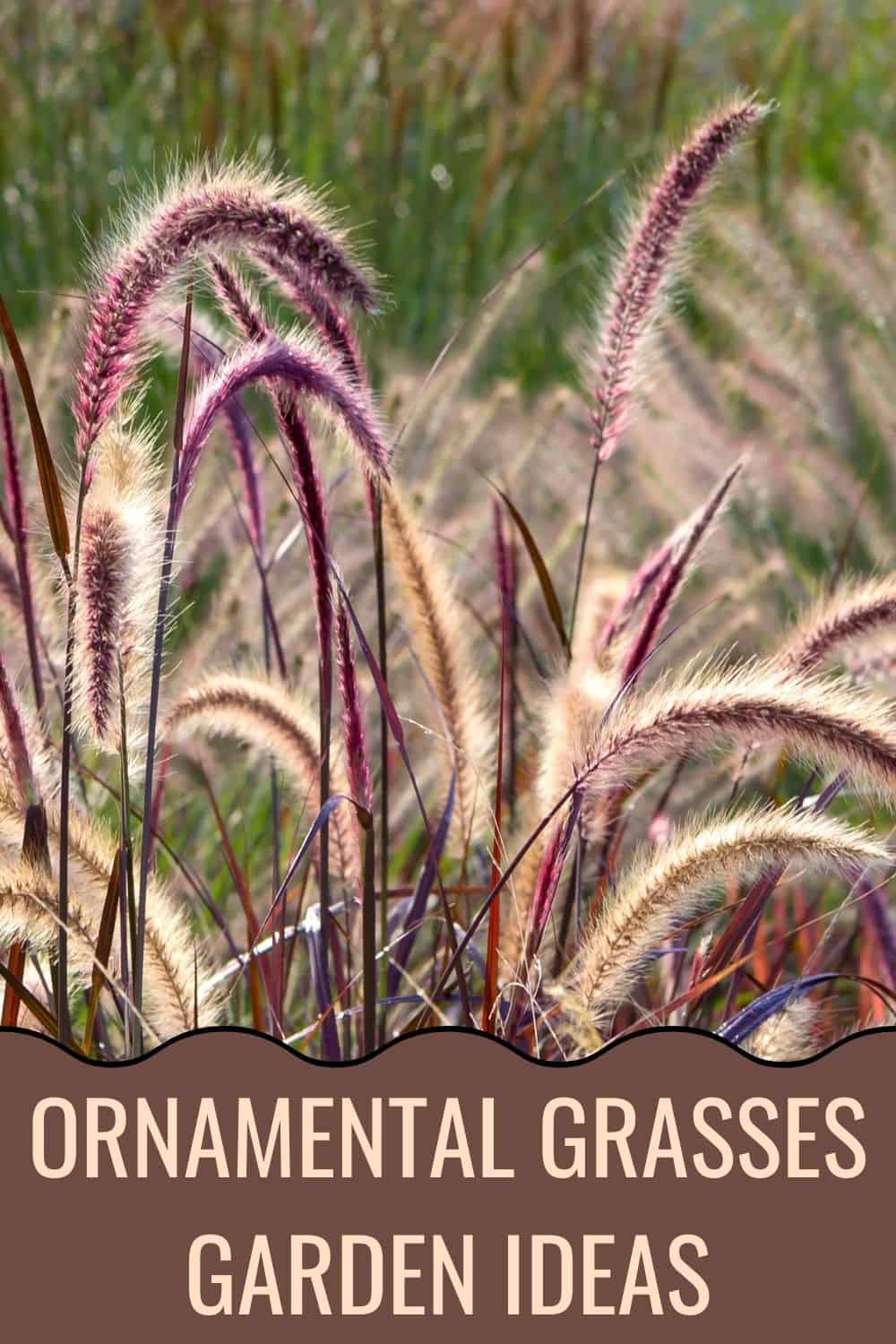Flowers, the darlings of most gardens, tend to outshine everything else. But the often-overlooked ornamental grasses have much to offer too. These low-maintenance plants add interesting texture and movement as well as color to a garden, come in a wide range of sizes, and often tolerate drought. Add a unique touch to your outdoor space with a few of these ornamental grasses garden ideas.

Ornamental Grasses Garden Ideas
1. Privacy hedge
Instead of a traditional hedge or wooden fence, consider planting an ornamental grass hedge to add natural privacy to your backyard or disguise an unsightly shed. Choose tall, full grasses and plant them with tight, even spacing. As they mature, the clumps of grass will grow together to form a barrier. Some good options include feather reed grass, maiden grass, and big bluestem, a North American native. How much prettier will your outdoor space be surrounded by swaying grasses than by a boring fence!
2. Unique sound
Many ornamental grasses not only look pretty but sound pretty too. The rustling, rattling sounds of grass in a breeze can have a calming effect and help you fully relax in your beautiful garden. While most ornamental grasses will rustle in the wind, look especially for varieties that flutter at the slightest provocation, such as northern sea oats, zebra grass, or purple moor grass. Just imagine relaxing in a hammock, serenaded by whispering grasses and singing wind chimes.
3. Lovely borders
Low-growing ornamental grasses can form neat, textured borders along flower beds, walkways, and other edges. For larger borders around your yard, you might choose taller, midsized varieties. Select clump-forming grasses over spreading types, which will quickly grow out of bounds and smear your tidy lines. Good small border grasses include blue fescue, Japanese sedge, and blue-eyed grass, but most slow-growing, clump-forming varieties will do.
4. Lush groundcover
Use ornamental grasses to cover a steep slope or other areas that are difficult to reach or otherwise receive little care. Once established, ornamental grasses will add beauty to previously bare spots with minimal maintenance required. You can even replace your lawn, or part of your lawn, with a mass planting of low-growing ornamental grasses.
Instead of wasting time every summer week mowing an area no one uses, you can enjoy a sea of rippling ornamental grass. Look for noninvasive spreading varieties like blue grama grass, prairie dropseed, or little bluestem.
5. Textured wildflower meadow
You make think of grass as a wildflower meadow “filler,” but it provides interesting texture, subtle color, and important habitat. If you already have or are planning to install a wildflower meadow, consider incorporating some ornamental grasses among the bright blooms. Of course, varieties native to your area will work best, but other noninvasive species can be used as well. Switchgrass, Indian grass, and purpletop are all good options.
6. Native habitat
As mentioned above, native grasses provide important wildlife habitat. Even if you don’t have a wildflower meadow, you can plant ornamental grasses with your little neighbors in mind.
Grasses provide food, shelter, and nesting materials for birds and insects as well as other wildlife. Select native varieties, especially those that grow naturally in your specific region. Depending on your area, you might choose golden sedge, tufted hair grass, or sideoats grama.
7. Year-round beauty
One of the many benefits of ornamental grasses is their beautiful appearance in all seasons. Warm-season grasses take off as the early spring blooms fade, and cool-season varieties offer a splash of green in a browning world.
In the winter, golden seed heads nod atop swaying stalks and sparkle when coated with frost. Look for grasses that stand out in the dormant months as well as the growing season, such as yellow foxtail grass, bottlebrush grass, or reed grass.
8. Complementary backdrop

Although lovely on their own, ornamental grasses provide a nice backdrop for bright flowers and other complementary plants. The pale, papery bark of river birch or paper birch trees contrasts beautifully in both texture and color with green grasses, for example.
Tall grasses like big bluestem might make a nice back border behind shorter flowering plants, while a carpet of low-growing grasses like blue fescue can add foliage around naturally leggy flowers.
9. Dramatic containers

Ornamental grasses also have a place in patio gardens. Plant a single clump of grass by itself in a large container for some dramatic vertical interest. Or place a small clump in a wide planter as a centerpiece and surround it with other, shorter plants, perhaps with a few spilling down the sides.
You can even put together a pot of mixed grasses and sedges with varying heights, shapes, textures, and colors. To really make a statement, choose showy grasses like Japanese blood grass, fiber optic grass, or red rooster carex.
Ornamental grasses can serve as a subtle backdrop to showier plants or shine on their own. Regardless, they bring a lot to the garden, from texture and color to movement and sound. Try incorporating a variety into your garden using one of the tips below, and enjoy!












8 Creative Landscaping Ideas To Hide Utility Boxes
Saturday 16th of April 2022
[…] shrubs, ornamental grasses grow tall, wide, and dense, effectively hiding utility boxes. Many have winter interest as well, […]
9 Creative Rooftop Garden Design Ideas -The Sky Is The Limit
Thursday 13th of January 2022
[…] herbs like lavender and rosemary spring to mind, as well as ornamental grasses. Add a few small trees, such as a dwarf olive, for height and to help make the small garden feel […]